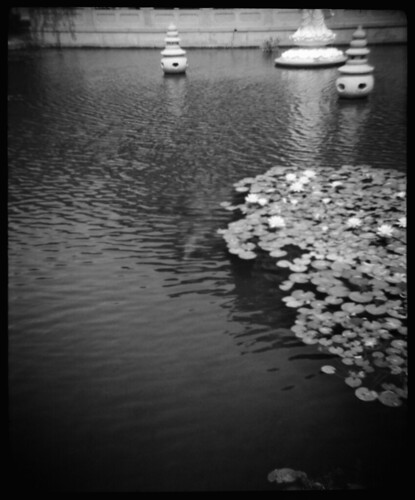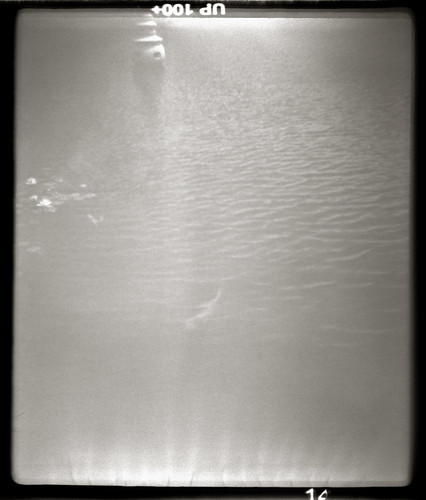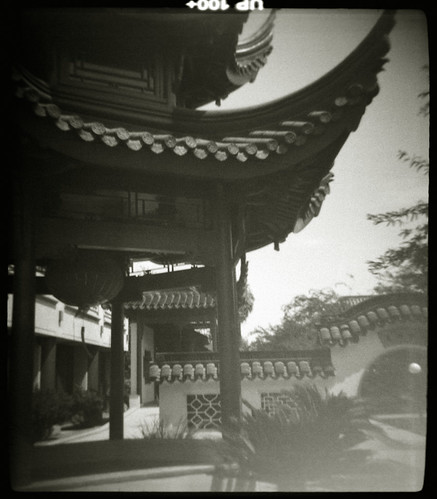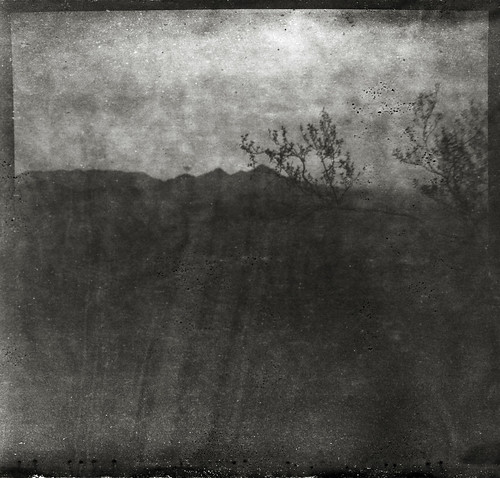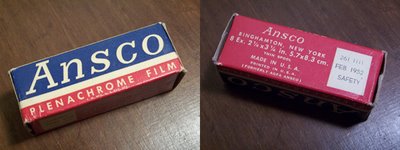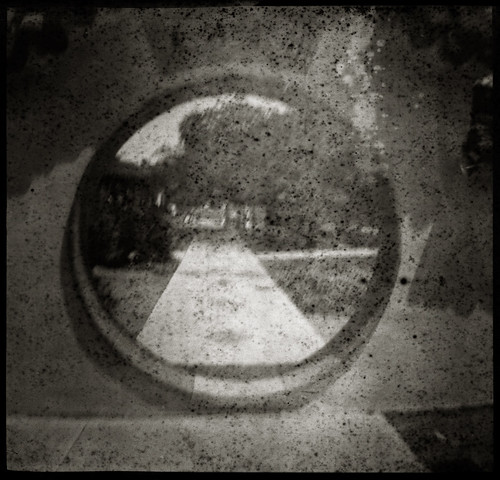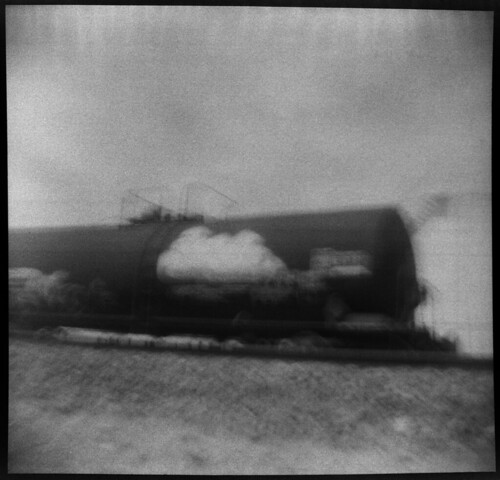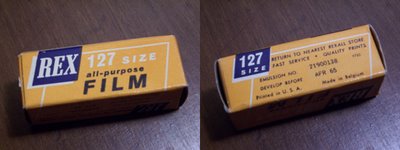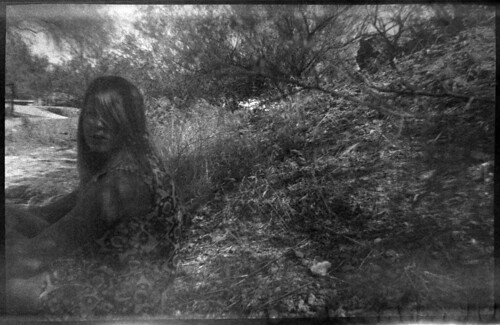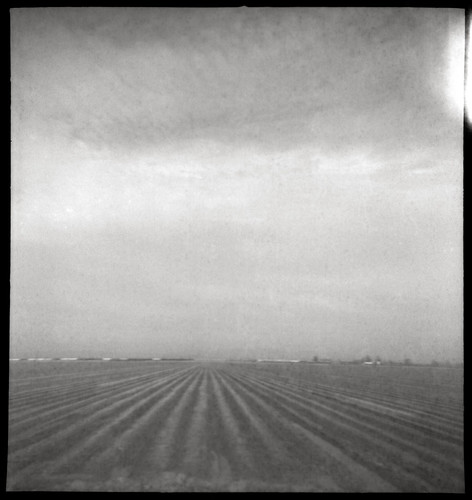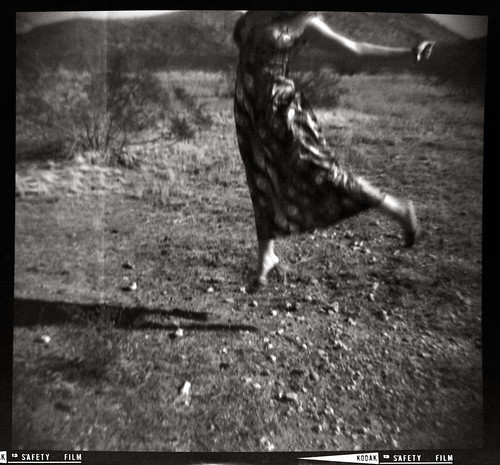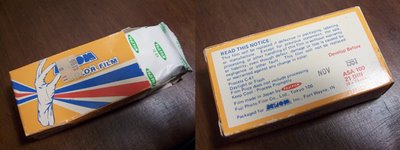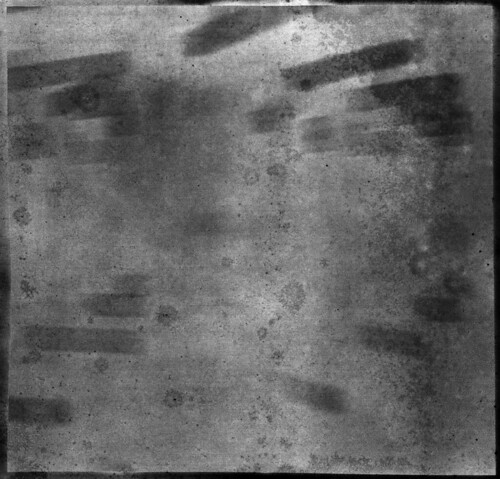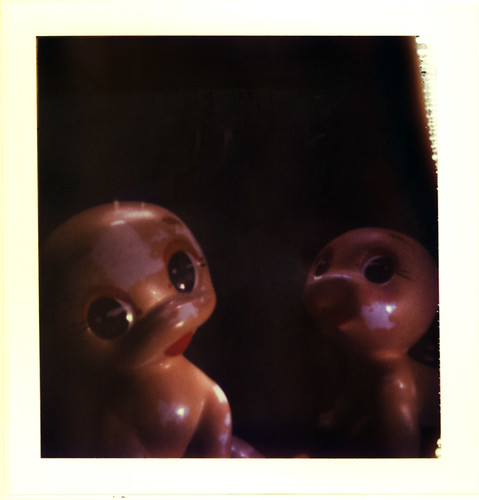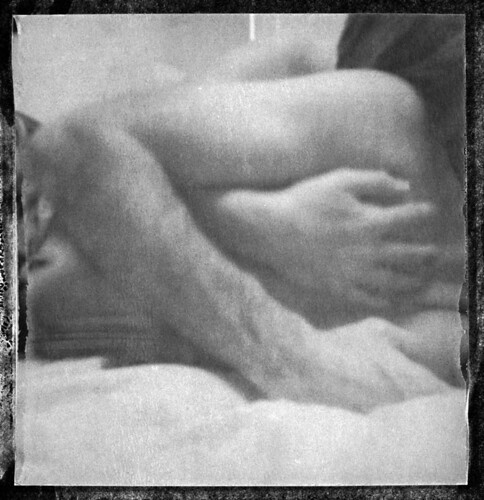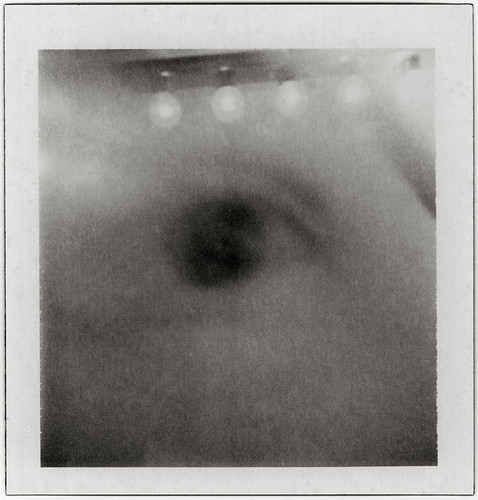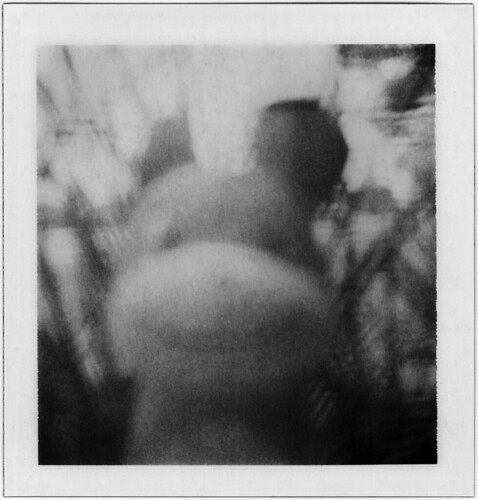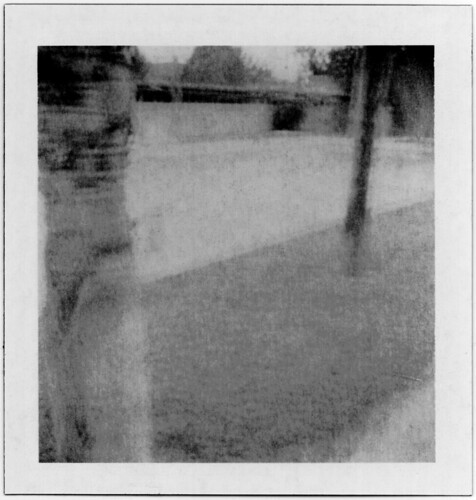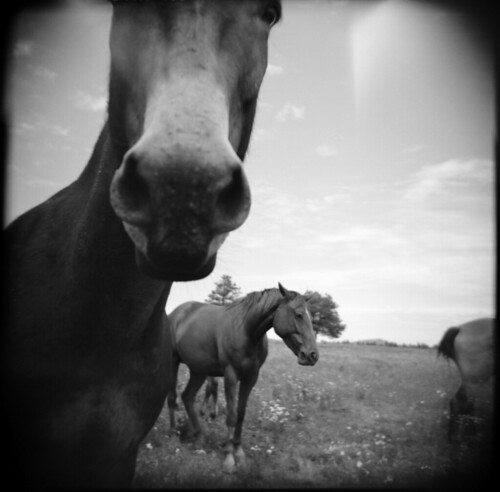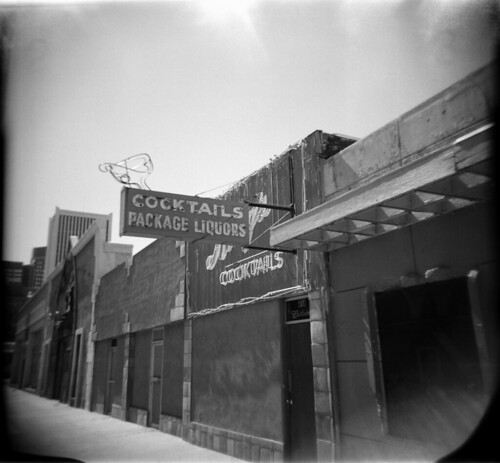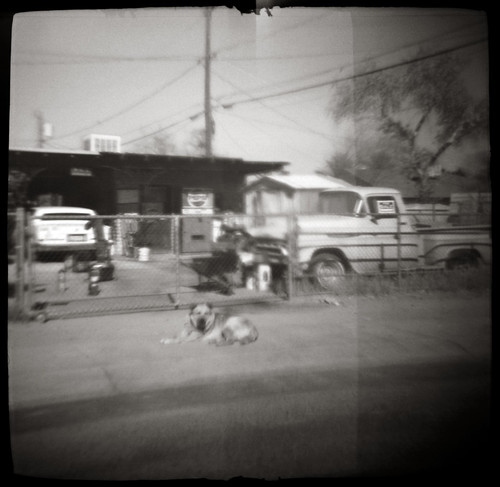
Well, the shutter kept getting stuck on the aperture plate in the barrel, so I took it apart to remove this piece (same problem, same solution with my Snappy). Then I figured since it was apart, I'd mess around a bit with it. I took a lens from a Fujipet and used some tape to hold it in. Had some nice and interesting results:
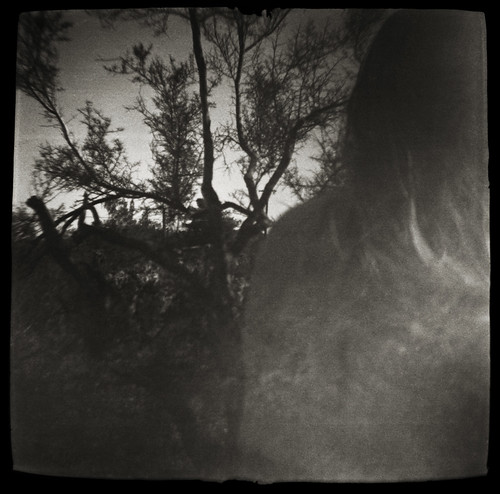
And I took the Banner lens and sanded it down to fit in my Fujipet...also a good match:
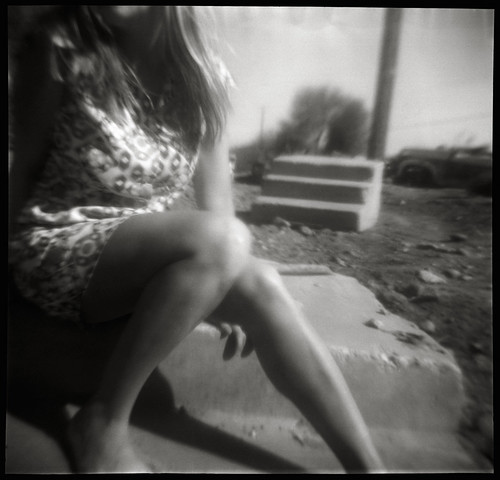
Well, since I can't use the Banner lens in the Banner anymore, I decided to use it for mod experiments. I have a couple Holga lenses (with the barrel) and figured it would be interesting, if nothing else, to put it on the Banner. I removed the front of the barrel on the Banner, leaving the part with the shutter. I cut an opening in the lens cap to tape to the Holga part, and taped this onto the Banner:
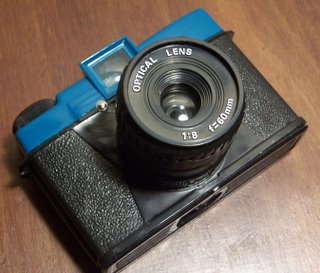
I shot a roll and got some photos, barely. Very dark and not in focus. Somewhat interesting, but not what I was looking for. Some of it was Banner quirks, like the random overexposing of a shot, but it was mostly from the Holga lens.

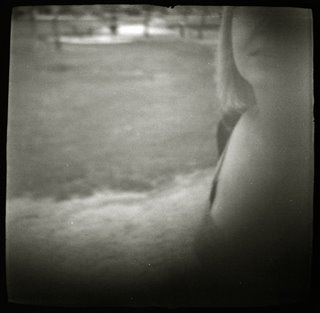

I see two basic problems to fix. One, I need to be a bit more accurate with my focal length. I kind of just held it next to a Holga and matched by eye. I think that it was a bit close to the lens. Since I can't twist to focus, I need to find the sweet spot where what I want to see is in focus.
The second problem, I think, is that the aperture on the holga is actually smaller that the one on the Banner. Quite a but smaller, so the photos were very underexposed and grainy....and you can actually see the edges of the hole on the photos. So I need to enlarge the opening behind the lens. I'll have to do some tweaking and shoot another roll. I use the cheapest film I can find when I'm messing around like this. Usually Arista.edu, since it's around $1.39 a roll.
I'm off on a camping trip to Utah for a week...bringing my usual "too many cameras." This time it's a Holga, a Fujipet, two Dianas (just in case), and a couple 127 cameras. I picked up a couple Baby Brownie Specials for $5 (for both), so I want to try one out, and I've loaded my Kodak Brownie Holiday with Kodak Plus-X, expired October 1953. Should be fun!


